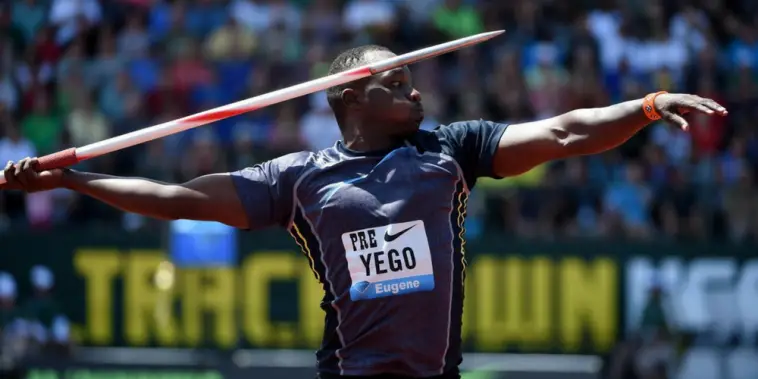Kenyans have a strong reputation in the world for being incredible long distance runners.
But Julius Yego, who hails from the country, decided to break the mould and started watching online videos at a cyber cafe to master the art of the javelin.
The story which has earned him the tag “The YouTube Man” in his homeland.

“You can’t compare the feeling of throwing a javelin, getting it just right and seeing it fly,” Yego says.
“That’s just perfection. It’s why I tell people that javelin lives inside me, it’s my lifeblood. I’ve always believed this ever since I first started. I think I have a natural feel for it.”

Yego was first attracted to the javelin while he was still in elementary school. “I began by throwing sticks against boys from school,” he laughs.
“You have to remember that I come from a background where there were no roads, no cars, no electricity.”
“Everyone ran barefoot to school. So we would cut and shape javelins from the branches of trees. I was competitive even at that age.”
“I saw the other boys throwing their sticks as far as they could and I believed I could beat them. I would practice on my own at my family’s farm while I was looking after the cows.”

But Yego’s determination paid off. He won gold in Mozambique, breaking the Kenyan national senior record in the process.
Hw was scouted by the IAAF, who invited him to train in Finland. It was there Yego met his first coach, Petteri Piironen, a man who would change his career.
“My technique wasn’t great,” Yego said. “YouTube can only take you so far. Petteri set me a training regime that I still use today.”
In 2012, Yego became Kenya’s first javelin competitor at the Olympics. He qualified for the London Olympics with a throw of 81.81m.

Last year, the 28-year-old threw a personal best of 92.72m to win gold at the World Championships in Beijing.
Yego is proud of his accomplishments and for putting Kenya on the map for javelin throwing.
“We have great talent in these events, but they’re too often marginalized in Kenya,” he said. “I saw that as a challenge and it motivated me to succeed.”
“I still have challenges today, I train without a coach most of the time, as it’s too expensive for me to pay Petteri to come to Kenya for long periods.”
“But my story has shown that it’s possible to be largely self-taught and succeed. As the world changes, maybe more and more people will be inspired to follow similar paths.”



